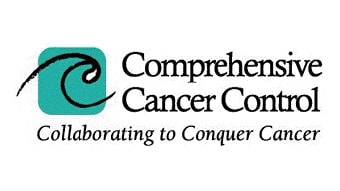What to know
- NCCCP helps cancer control coalitions implement effective and sustainable plans to prevent and control cancer.

What it is
Established in 1998, CDC's National Comprehensive Cancer Control Program (NCCCP) provides funds, guidance, and technical assistance to help cancer control coalitions implement effective and sustainable plans to prevent and control cancer. NCCCP supports:
- All 50 states and the District of Columbia.
- 8 US territories and freely associated states.
- 7 tribes and tribal organizations.
NCCCP unites organizations nationwide—all of which are focused on promoting people’s health—to create plans that help lower the number of people affected by cancer. A cancer control plan focuses on the types of cancer unique to each community that have the highest burden—and includes strategies that have worked in other places to help prevent and control those cancers.
Groups that work to reduce cancer in state, local, or tribal areas are called cancer coalitions. They are the backbone of comprehensive cancer control.
Of coalitions in the United States:
- 100% include public health program workers.
- 95% include representatives from community groups like faith-based organizations.
- 95% include members from colleges and hospitals.
- 94% include members of professional associations for nurses, oncologists, or primary care doctors.
- 85% include people from local businesses.
- 76% include people who make laws or local policies.
- 72% include partners in local, state, or national government.
Comprehensive cancer control plans
Every coalition creates a plan to guide its activities by looking at:
- Common types of cancer in its communities (places where a certain cancer is diagnosed more often than in the rest of the country, state, or territory).
- Things that can lead to cancer in the area (for instance, sun exposure in places that have a lot of sunny days each year, or lack of physical activity in communities without parks and places to walk or bike).
Priorities
CDC has six priorities for the CCC programs it funds.
- Stress primary prevention. The easiest way to fight cancer is to stop it before it starts. Primary prevention helps people choose healthy behaviors to lower their risk of getting cancer, such as human papillomavirus (HPV) vaccination, tobacco-free living, and sun safety.
- Help people find cancer early by getting screened at the right time. Screening for cervical cancer and colorectal (colon) cancer can prevent cancer by finding early lesions so they can be treated or removed before they become cancerous. Screening for cervical, colorectal, breast, and lung cancers helps find these diseases at an early stage, when treatment works best.
- Support people diagnosed with cancer (survivors) through their treatment and beyond. Comprehensive cancer control programs assess survivors' needs, provide education programs and patient navigation systems, and improve access to cancer resources and services.
- Provide proven strategies for states, health care networks, and others to put into place, making sure cancer control efforts are effective for everyone who needs them.
- Promote access to good health care for everyone. Award recipients address health equity by training and maintaining a culturally competent workforce, promoting equitable access to resources, and improving data measurement in research and surveillance.
- Study policies and programs to make sure they work. Evaluation drives public health decision-making and identifies what works and where resources need to be invested.
Putting priorities into action
Each area looks at the most pressing cancer-related needs of its citizens and decides which cancer control goals are most important. These decisions can depend on risk factors, average age of people in the area, and even things like the number of sunny days per year or the percentage of people who are overweight.
- 94% of programs adopt strategies to help make life better for cancer survivors after treatment.
- 84% of programs stress lowering cancer risk by eliminating tobacco use, encouraging people to be physically active and eat healthy, and protecting people from skin-damaging ultraviolet light from the sun or indoor tanning.
- 80% of programs increase colorectal (colon) cancer screening in their areas.
- 62% work with partners to increase HPV vaccination. HPV causes many types of cancer.
Cancer control nationwide
While states, territories, and tribes have coalitions, a national group also works to strengthen efforts across the country to control and prevent cancer. CDC is a member of the Comprehensive Cancer Control National Partnership. The partnership helps comprehensive cancer control coalitions develop, implement, and evaluate cancer control plans.
